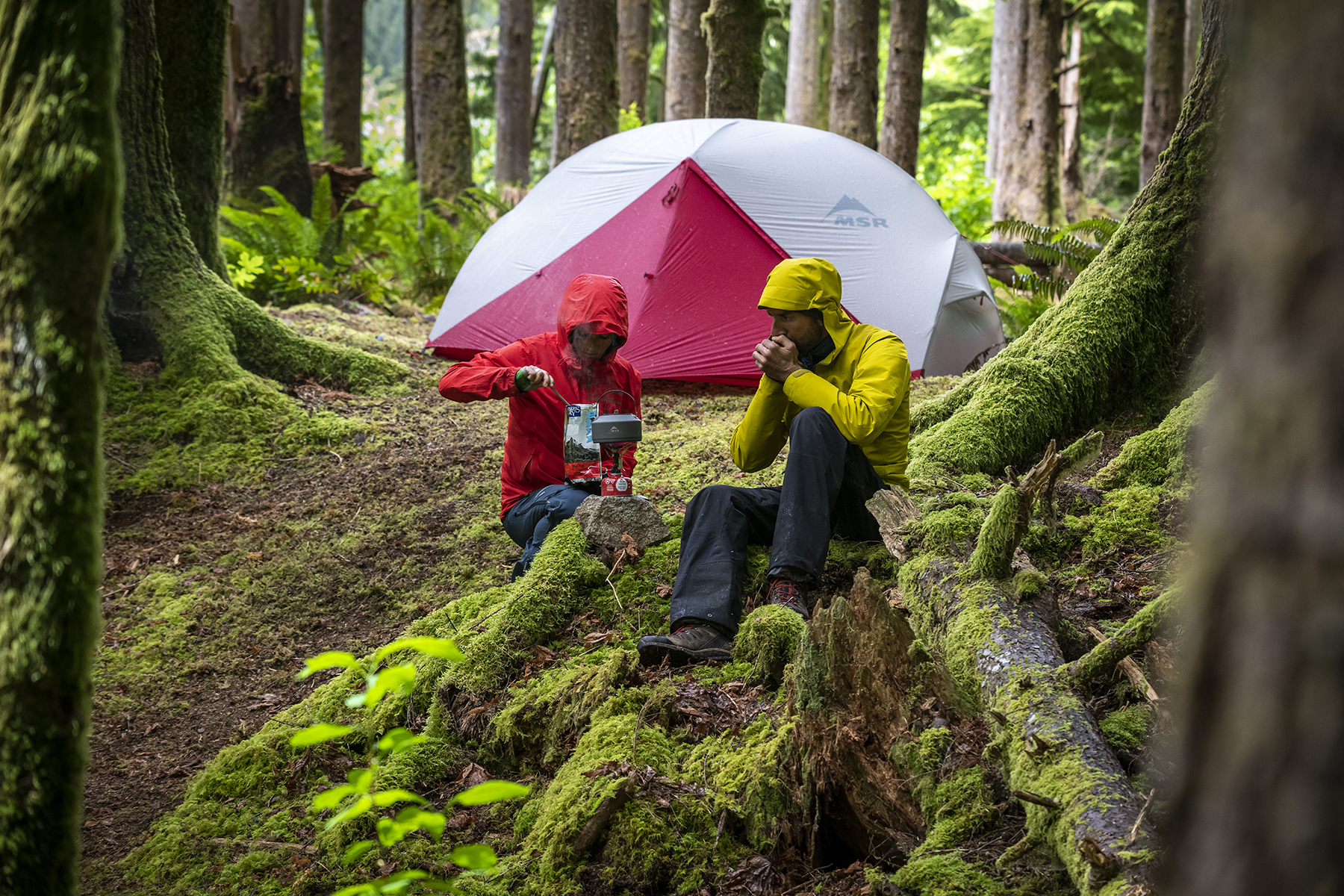Hiking and camping: what to take on your backpacking trip
Outdoor Activities | March 28, 2024
SAIL
October 22, 2020

Courtesy of MSR | Photo: Scott Rinckenberger
Fall’s cooler temperatures bring a burst of color to the backcountry, and with it, a relief from the ever-present bugs of summer. Depending on your region, fall might usher in a welcome reprieve from the heat, or newly frigid nights. These seasonal changes also impact our approach to selecting gear. To help you make the most of your adventures during this spectacular shoulder season, we put together a few pro tips for cold-weather camping in the fall.
Fall’s fickle weather can introduce stronger winds and colder temps. These two elements hamper the performance of traditional canister stoves. When it’s windy, the stoves struggle to maintain a flame. When it’s cold, their output decreases because cold air causes the pressure in their canister to drop. To ensure your stove runs strong in these conditions, choose one that features a windproof design, an integrated pressure regulator, or allows you to run the canister inverted in “liquid-feed mode.”
Canister stoves with these technologies operate far better in challenging conditions. However, liquid fuel stoves remain the gold standard for cold-weather cooking. That’s because they deliver consistent heat output regardless of the conditions, making them a reliable choice deep into winter’s coldest months.
As nighttime temperatures drop, condensation inside your tent becomes more of an issue. While you sleep, your body produces heat that warms the air around you. When that air comes into contact with the cold fabric of the tent, it condenses, forming water droplets. Creating airflow in your tent is the best way to reduce condensation. A double-wall tent, which features a rainfly and a tent body (two walls), is easier to vent than a single-wall tent in which the canopy of the tent is also the rainfly (a single wall).
It’s nearly impossible to sleep well when you’re cold. But lugging around an over-built sleeping bag and extra thick mattress isn’t practical when you’re backpacking. Instead, you can often achieve the same level of warmth if you get smart with layering. For example, consider doubling up on mattresses—use a foam mattress along with an air mattress. Ensure that at least one of these features a heat-reflecting layer. Together, the two mattresses will better insulate you from the ground. And (, bonus!), the foam mattress provides a nice seat while cooking and lounging before bedtime.
Additionally, your summer sleeping bag may not be enough on its own, but toss an ultralight quilt on top and you’re set. This combination may still come in lighter than a heavy zero-degree bag. Also keep in mind, the larger your sleeping bag, the more heat it takes to warm it up. So, choose a bag that fits you well, but doesn’t provide much excess room.
As noted above, canister stoves rely on the pressure in their fuel canisters to run. But cold air reduces that pressure. Therefore, the easiest way to keep your stove burning stronger, longer is to prevent your canisters from getting cold.
One way to keep your canister warm is by storing it in your sleeping bag overnight or tucking it in your insulated jacket. Another good trick is to warm up at least two canisters, so that as one canister starts to chill and fade during use, you can swap it for a warm one and keep on cooking.
Finally, you can warm up a bowl of water and place the canister in it while you’re cooking. The liquid water will ensure that the canister temp stays above freezing, helping to keep your stove cranking.
When nighttime temps drop to freezing levels, it’s important to ensure you water filter doesn’t freeze. Some filters feature media types that are susceptible to damage if the water trapped inside their cartridge freezes. The hollow fiber membranes used in microfilters are one example.
Like your electronics and fuel canisters, you can place your water filter in a dry sack at the foot of your sleeping back to keep it warm through the night to ensure you have access to clean, safe water for the rest of your trip.
Food equals warmth. So, snacking often and eating calorie-packed meals provides your body with the fuel it needs to generate heat. At night, high-fat and high-protein foods burn slower than high-carb meals, and keep you sustained longer.
Drinking plenty of water is also key to staying warm—dehydration taxes your body and leads to fatigue, which makes you cold. Consume warm liquids, and if you sweat during the day’s activity, ensure you replenish those electrolytes afterward.
Nothing lifts your spirits in the morning like warm sun hitting your campsite. As you pitch your tent, pay attention to east aspects, where the sun rises, and try to position your shelter for those early rays.
We’d be remiss not to mention the abundance of blueberries that peak during this time in many backcountry regions. Bring a bowl and indulge in this fall bounty. Just remember to rinse them prior to eating. Perfect toppers for oatmeal and a perfectly good reason to stop halfway through a hike, wild blueberries are a signature fall delicacy. And, one worth the extra effort of camping in the colder months of the year.
It’s easier to enjoy fall’s vibrant colors and bug-free days when you’re not shivering. Here are a few tips for staying warm when the days are shorter and the nights colder:
In collaboration with the MSR team